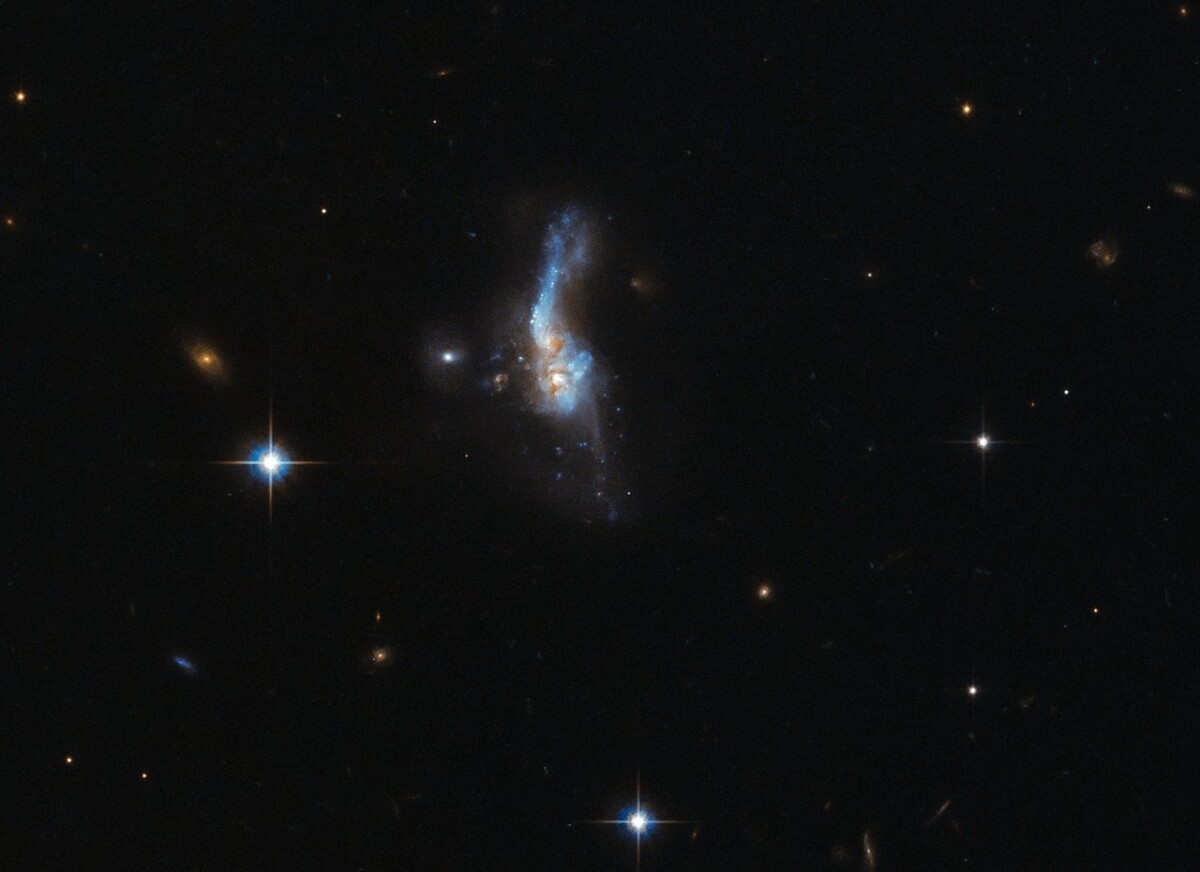Researchers have observed ten times as many hyperluminous galaxies than stars could produce according to theoretical models. And that is quite strange.
There are many so-called hyperluminous galaxies in the universe; one of the brightest objects in the universe. But researchers have now come to the startling discovery that there are as many as ten times more of these types of ‘hyper-bright’ galaxies than stars theoretically could produce. This means that stars are not single-handedly responsible for the brightness of these hyperluminous galaxies. “We are now investigating which physical mechanisms could power such extreme galaxies,” said researcher Lingyu Wang. The findings are published in a special edition of Astronomy & Astrophysics.
Hyperluminous galaxies
As mentioned, hyperluminous galaxies are among the most luminous objects in the universe. “If their brightness is fully attributed to star formation, these incredible galaxies would be home to a thousand times as many stars as our Milky Way does now,” Wang said in an interview. Scientias.nl. “The first hyperluminous galaxies were created using the Infrared Astronomical Satellite (IRAS), a joint mission of the United States, the Netherlands and the United Kingdom. Hyperluminous galaxies are also amazingly massive systems in the early Universe. They are usually over a hundred times the mass of our Milky Way and date from a time when the universe was only 20 percent of its current age. Therefore, hyperluminous galaxies are believed to evolve into the heaviest galaxies in the current Universe. Because of their brightness, hyperluminous galaxies are excellent targets for studying massive galaxy formation and for testing theoretical models of how galaxies form and evolve. ”
theory
The prevailing theory of hyperluminous galaxies goes like this: Eleven billion years ago – about three billion years after the Big Bang – galaxies started to form relatively quickly. Gas was abundant, so a small fraction of these early galaxies were able to grow into massive, hyperluminous ones, with a brightness of ten trillion suns. As gas reserves dried up over time, fewer galaxies were able to grow at high speed. When astronomers studied the universe with the help of the infrared space telescope Herschel, they saw this theory generally confirmed. But in absolute numbers, it appeared that there are more than ten times more hyperluminous infrared galaxies in existence, both in the early Universe and closer to home. Unfortunately, Herschel’s spatial resolution could not distinguish all individual galaxies, so researchers couldn’t say for sure.
Confirmed
In the current study, researchers decided to verify the previous findings. Using the LOFAR telescope – one of the largest radio telescopes in the world – the researchers did manage to distinguish the galaxies individually. And that led to an interesting conclusion. Indeed, the team concluded that there are more than ten times as many hyperluminous galaxies than the theory predicts. “It’s quite strange from a theoretical point of view,” says Wang. “It means that we currently do not have a single model that explains how so many hyperluminous galaxies can form without violating other observational limitations.” In addition, the findings raise new questions. “Are there many such monsters in the universe? Or is the immense clarity not correct? ” Wang wonders aloud. “For example, one explanation may be that the brightness of many hyperluminous galaxies is increased by a process called gravitational lenses. This means that their intrinsic clarity may not be that extreme after all. Another possible explanation is that these hyperluminous galaxies do not represent separate galaxies. Instead, they are combinations of different galaxies that seem mixed together. ”
The spectrum observed and the fit of an example of a hyperluminous galaxy. At the bottom you see images of this galaxy in different wavelengths. From left to right: HSC i-band (optical), DXS K-band (near infrared), IRAC 4.5 μm (mid infrared), MIPS 24 μm (far infrared), Herschel SPIRE 250 μm (far infrared) and LOFAR 2 m (radio). It shows that hyperluminous infrared galaxies usually shine very faintly or are even invisible in optical data and radiate most of their energy in the infrared. Image: Lingyu Wang / SRON
–
Still, it seems we can ban the prevailing theory to the trash and look for a new one. The researchers are therefore determined to get the bottom stone out. For example, they are now studying which physical mechanisms could possibly also drive such extreme galaxies. “If the hyperluminous galaxies are powered by star formation, they would form stars with thousands of solar masses per year,” says Wang. And the theoretical models cannot produce enough galaxies to form stars at such extreme speeds. Another possible explanation is that most of these hyperluminous galaxies are not powered by star-forming activity. Instead, their tremendous brightness comes from the accumulation of matter that falls into the fast-growing supermassive black hole at the center of the galaxy. ” Yet this explanation also seems unlikely. “That’s because a detailed study of how brightness varies with wavelength suggests that the power source of many hyperluminous galaxies is star formation,” Wang said. “We need follow-up observations to study the true nature of these extreme objects.”
The team will conduct these follow-up observations at the Keck Observatory in Hawaii. In doing so, they hope to reveal more precise data on the redshift of the galaxies – and thus their distance. And that is expected to provide us with more information. “Our understanding of the formation of massive galaxies is very incomplete,” says Wang. And so, the researchers hope to gather more information about hyperluminous galaxies in order to expand our knowledge. “Studying these extreme objects is essential to improve our understanding of the formation and evolution of massive galaxies,” concludes Wang.
–
Keep amazed ✨
Receive the most beautiful space photos and interesting popular science articles every Friday. Get the free Scientias Magazine together with 50,000 others.

:quality(80)/cdn-kiosk-api.telegraaf.nl/6c0bf6d0-2a40-11eb-8995-0255c322e81b.jpg)
